Polystyrene Waste in Panels for Thermal Retrofitting of Historical Buildings: Experimental Study
Abstract
1. Introduction
- Insulation from the inside preventing the development of condensation with the application of thermal insulation material, so that the value of the diffusively equivalent air layer thickness Sd of the thermal insulation and/or the applied vapor barrier exceeds 1500 m.
- Insulation from the inside minimizing the development of interstitial condensation with the use of diffusion resistance materials, for which the total, diffusively equivalent air layer thickness Sd is contained between 0.5 and 1500 m.
- Insulation from the inside allowing the condensation to develop, on condition that justification or proof is provided that the condensate formed during the unfavorable period evaporates during the calculation year.
- presentation of the production method and material composition;
- laboratory tests including the determination of the basic characteristics of this type of insulation materials;
- in situ tests carried out in a building that has undergone thermal modernization-thermal insulation of external envelopes from the inside; in situ tests were carried out with reference to the material commonly used in these solutions, i.e., lightweight concrete (description of the solution in wpc.); the purpose of in situ research was to confirm the effectiveness of the new component;
- thermovision analysis conducted in a building that has undergone thermal modernization-as a control test.
2. Materials and Methods
2.1. Recycling Panels
- the use of polystyrene waste, which increases thermal insulation of the panels;
- the use of microfibers that increase resistance to mechanical damage and cracks related to the process of assembly, transport, storage, or conditions of use (Figure 1);
- production technology enabling board formation of various shapes and dimensions so that the boards are “tailored” to the needs of property developers and builders.
2.2. Structure of the Tested Component
3. Research
3.1. Laboratory Tests
- thermal conductivity coefficient (hot wire method and in a plate apparatus),
- diffusion resistance coefficient,
- density,
- pH reaction,
- long term water absorption by immersion,
- initial rate of water absorption,
- water absorption, and
- reaction to fire.
3.2. In Situ Tests
4. Result and Discussion
4.1. Laboratory Results
4.2. In Situ Test Results
5. Conclusions
Funding
Institutional Review Board Statement
Informed Consent Statement
Acknowledgments
Conflicts of Interest
References
- Peterson, C. Building with Second Hand Stuff: How to Re-Claim, Re-Vamp, Re-Purpose & Re-Use Salvaged & Leftover Building Materials Paperback; Cool Springs Press: Franklin, TN, USA, 2011. [Google Scholar]
- Ng, W.Y.; Chau, C.K. New Life of the Building Materials Recycle, Reuse and Recovery. Energy Procedia 2015, 75, 2884–2891. [Google Scholar] [CrossRef]
- Saghafi, M.D.; Hosseini Teshnizi, Z.S. Recycling value of building materials in building assessment systems. Energy Build. 2011, 43, 3181–3188. [Google Scholar] [CrossRef]
- Ramesh, T.; Prakash, R.; Shukla, K.K. Life cycle energy analysis of buildings: An overview. Energy Build. 2010, 42, 1592–1600. [Google Scholar] [CrossRef]
- Cabeza, L.F.; Rincón, L.; Vilariño, V.; Pérez, G.; Castell, A. Life cycle assessment (LCA) and life cycle energy analysis (LCEA) of buildings and the building sector: A review. Renew. Sustain. Energy Rev. 2014, 29, 394–416. [Google Scholar] [CrossRef]
- Thormark, C. A low energy building in a life cycle—Its embodied energy, energy need for operation and recycling potential. Build. Environ. 2002, 37, 429–435. [Google Scholar] [CrossRef]
- Blengini, G.A. Life cycle of buildings, demolition and recycling potential: A case study in Turin, Italy. Build. Environ. 2009, 44, 319–330. [Google Scholar] [CrossRef]
- Blengini, G.A.; Di Carlo, T. The changing role of life cycle phases, subsystems and materials in the LCA of low energy buildings. Energy Build. 2010, 42, 869–880. [Google Scholar] [CrossRef]
- Turk, J.; Cotič, Z.; Mladenovič, A.; Šajna, A. Environmental evaluation of green concretes versus conventional concrete by means of LCA. Waste Manag. 2015, 45, 194–205. [Google Scholar] [CrossRef]
- Papadopoulos, A.M.; Karamanos, A.; Avgelis, A. Environmental Impact of Insulating Materials at the End of Their Useful Lifetιme. Protection and Restoration of the Environment VI. 2002. Available online: https://www.researchgate.net/profile/Agis-Papadopoulos/publication/237448672_environmental_impact_of_insulating_materials_at_the_end_of_their_useful_lifetime/links/0046352cede4daa9a6000000/environmental-impact-of-insulating-materials-at-the-end-of-their-useful-lifetime.pdf (accessed on 25 March 2021).
- European Union. Directive (EU) 2018/851 of the European Parliament and of the Council of 30 May 2018 Amending Directive 2008/98/EC on Waste; Brussels, Belgium, 2018. [Google Scholar]
- Krause, P.; Nowoświat, A. Experimental Studies Involving the Impact of Solar Radiation on the Properties of Expanded Graphite Polystyrene. Energies 2020, 13, 75. [Google Scholar] [CrossRef]
- Krause, P.; Nowoświat, A.; Pawłowski, K. The Impact of Internal Insulation on Heat Transport through the Wall: Case Study. Appl. Sci. 2020, 10, 7484. [Google Scholar]
- Zhou, X.; Carmeliet, J.; Derome, D. Influence of envelope properties on interior insulation solutions for masonry walls. Build. Environ. 2018, 135, 246–256. [Google Scholar] [CrossRef]
- Energy Efficiency in European Historic Urban Districts. A Practical Guidance. Available online: https://www.effesus.eu/wp-content/uploads/2016/06/effesus_booklet_final-version.pdf (accessed on 8 March 2021).
- Lu, J.; Marincioni, V.; Orr, S.A.; Altamirano-Medina, H. Climate Resilience of Internally-Insulated Historic Masonry Assemblies: Comparison of Moisture Risk under Current and Future Climate Scenarios. Minerals 2021, 11, 271. [Google Scholar] [CrossRef]
- Rieser, A.; Pfluger, R.; Troi, A.; Herrera-Avellanosa, D.; Thomsen, K.E.; Rose, J.; Arsan, Z.D.; Akkurt, G.G.; Kopeinig, G.; Guyot, G.; et al. Integration of Energy-Efficient Ventilation Systems in Historic Buildings—Review and Proposal of a Systematic Intervention Approach. Sustainability 2021, 13, 2325. [Google Scholar] [CrossRef]
- Richter, M.; Horn, W.; Juritsch, E.; Klinge, A.; Radeljic, L.; Jann, O. Natural Building Materials for Interior Fitting and Refurbishment—What about Indoor Emissions? Materials 2021, 14, 234. [Google Scholar] [CrossRef]
- Piasecki, M.; Radziszewska-Zielina, E.; Czerski, P.; Fedorczak-Cisak, M.; Zielina, M.; Krzyściak, P.; Kwaśniewska-Sip, P.; Grześkowiak, W. Implementation of the Indoor Environmental Quality (IEQ) Model for the Assessment of a Retrofitted Historical Masonry Building. Energies 2020, 13, 6051. [Google Scholar] [CrossRef]
- Lucchi, E.; Tabak, M.; Troi, A. The “Cost Optimality” Approach for the Internal Insulation of Historic Buildings. Energy Procedia 2017, 133, 412–423. [Google Scholar] [CrossRef]
- Orlik-Kożdoń, B. Interior insulation of masonry walls—Selected problems in the design. Energies 2019, 12, 3895. [Google Scholar] [CrossRef]
- Orlik-Kożdoń, B.; Steidl, T. Impact of internal insulation on the hygrothermal performance of brick wall. J. Build. Phys. 2017, 41, 120–134. [Google Scholar] [CrossRef]
- WTA. Innendämmung Nach WTA I Planungsleitfaden, Referat 6 Bauphysik und Bauchemie; Wissenschaftlich-Technische Arbeitsgemeinschaft für Bauwerkserhaltung und Denkmalpflege, Ed.; Fraunhofer IRB Verlag: Stuttgart, Germany, 2009. [Google Scholar]
- Musunuru, B. Pettit: Building Science Corporation: Measure Guideline: Deep Energy Enclosure Retrofit for Interior Insulation of Masonry Walls. Available online: http://www.osti.gov/scitech (accessed on 8 March 2021).
- Straube, J.F.; Ueno, K.; Schumacher, C.J.; Building Science Corporation. Measure Guideline: Internal Insulation of Masonry Walls; U.S. Department of Energy: Washington, DC, USA, 2012.
- Arbeiter, K. Innendaemmung; Rudolf Mueller: Koeln, Germany, 2014. [Google Scholar]
- Praxis-Handbuch Innendammung; Planung—Konstruktion—Details—Beispiele; Verlagsgesellschaft Rudolf Muller GmbH & Co. KG: Koln, Germany, 2016.
- Lieber, G.; Sous, S. Energetisch optimierte Gründerzeithäuser—Baupraktische Detaillösungen für Innendämmungen unter besonderer Berücksichtigung der Anforderungen der Energieeinsparverordnung von April; Bundesamt für Bauwesen und Raumordnung: Bonn, Germany, 2009. [Google Scholar]
- Wójcik, R. Docieplanie Budynków od Wewnątrz (Insulation of Buildings from the Inside); MEDIUM: San Francisco, CA, USA, 2017. [Google Scholar]
- Walker, R.; Pavía, S. Thermal performance of a selection of insulation materials suitable for historic buildings. Build. Environ. 2015, 94, 155–165. [Google Scholar] [CrossRef]
- DIN 4108-3 Klimabedingter Feuchteschutz; Anforderungen, Berechnungsverfahren und Hinweise für Planung und Ausführung Enthält Randbedingungen und Rechenvorschriften für das Glaser-Verfahren, 2018.
- European Union. Directive 2012/27/EU of the European Parliament and of the Council of 25 October 2012 on Energy Efficiency, amending Directives 2009/125/EC and 2010/30/EU and Repealing Directives 2004/8/EC and 2006/32/EC Text with EEA Relevance; Brussels, Belgium, 2012. [Google Scholar]
- European Union. Directive 2010/31/EU of the European Parliament and of the Council of 19 May 2010 on the Energy Performance of Building; Brussels, Belgium, 2010. [Google Scholar]
- Orlik-Kożdoń, B.; Steidl, T. Experimental and analytical determination of water vapour transmission properties of recyclable insulation material. Constr. Build. Mater. 2018, 192, 798–807. [Google Scholar] [CrossRef]
- EN 772-21: Methods of Test for Masonry Units—Part 21: Determination of Water Absorption of Clay and Calcium Silicate Masonry Units by Cold Water Absorption, 2011.
- EN 772-11:2000: Methods of Test for Masonry Units—Part 11: Determination of Water Absorption of Aggregate Concrete, Manufactured Stone and Natural Stone Masonry Units Due to Capillary Action and the Initial Rate of Water Absorption of Clay Masonry Units, 2000.
- EN 12087:2013: Thermal Insulating Products for Building Applications. Determination of Long Term Water Absorption by Immersion, 2013.
- EN 1015-1:2001—Methods of Test for Mortar for Masonry. Determination of Flexural and Compressive Strength of Hardened Mortar, 2001.
- ISO 12571:2013: Hygrothermal Performance of Building Materials and Products—Determination of Hygroscopic Sorption Properties, 2013.
- EPA Publication 740R14001, Flame Retardant Alternatives for Hexabromocyclododecane (Hbcd). 2014. Available online: http://www.tbtguide.com/sxzpt/kszpt/zxzxks/201412/W020141230595081103832.pdf (accessed on 8 March 2021).
- Binational Strategy for Hexabromocyclododecane (HBCD) Risk Management; A Document to Assist in the Engagement of Key Stakeholders and the Public in Strategy Development. 2017. Available online: https://www.ec.gc.ca/ese-ees/5F5A32FB-3FD2-438F-A0A3-E973380199AF/HBCD_RM%20Approach_EN.pdf (accessed on 8 March 2021).
- Tange, L.; Schlummer, M.; Meuwissen, E.; Eberstaller, R. A Sustainable Solution for HBCDD Containing PS Foam via a Dissolving Technique with Bromine Recovery. Organohalog. Compd. 2016, 78, 629. [Google Scholar]
- Paolella, A.; Grifoni, R.C. The Use of Expanded Polystyrene in Construction: Critical Reflections on an Environmentally Harmful Material. Available online: http://www.adrianopaolella.it/wp-content/uploads/2018/07/PAOLELLA-A.-GRIFONI-R.-2011-The-use-of-expanded-polystyrene-in-construction.pdf (accessed on 8 March 2021).
- Orlik-Kożdoń, B.; Nowoświat, A. Modelling and testing of a granular insulating material. J. Build. Phys. 2018, 42, 6–15. [Google Scholar] [CrossRef]
- Orlik-Kożdoń, B. Assessment of the application efficiency of recycling materials in thermal insulations. Constr. Build. Mater. 2017, 156, 476–485. [Google Scholar] [CrossRef]
- Orlik-Kożdoń, B.; Belok, J. Experimental and numerical study on the effective thermal conductivity of channel thermal insulation plate. Int. J. Heat Mass Transf. 2017, 106, 1097–1106. [Google Scholar] [CrossRef]
- Orlik-Kożdoń, B.; Steidl, T. Effect of the air channels in thermal insulating material on its thermal resistance. J. Build. Phys. 2016, 39, 461–470. [Google Scholar] [CrossRef]

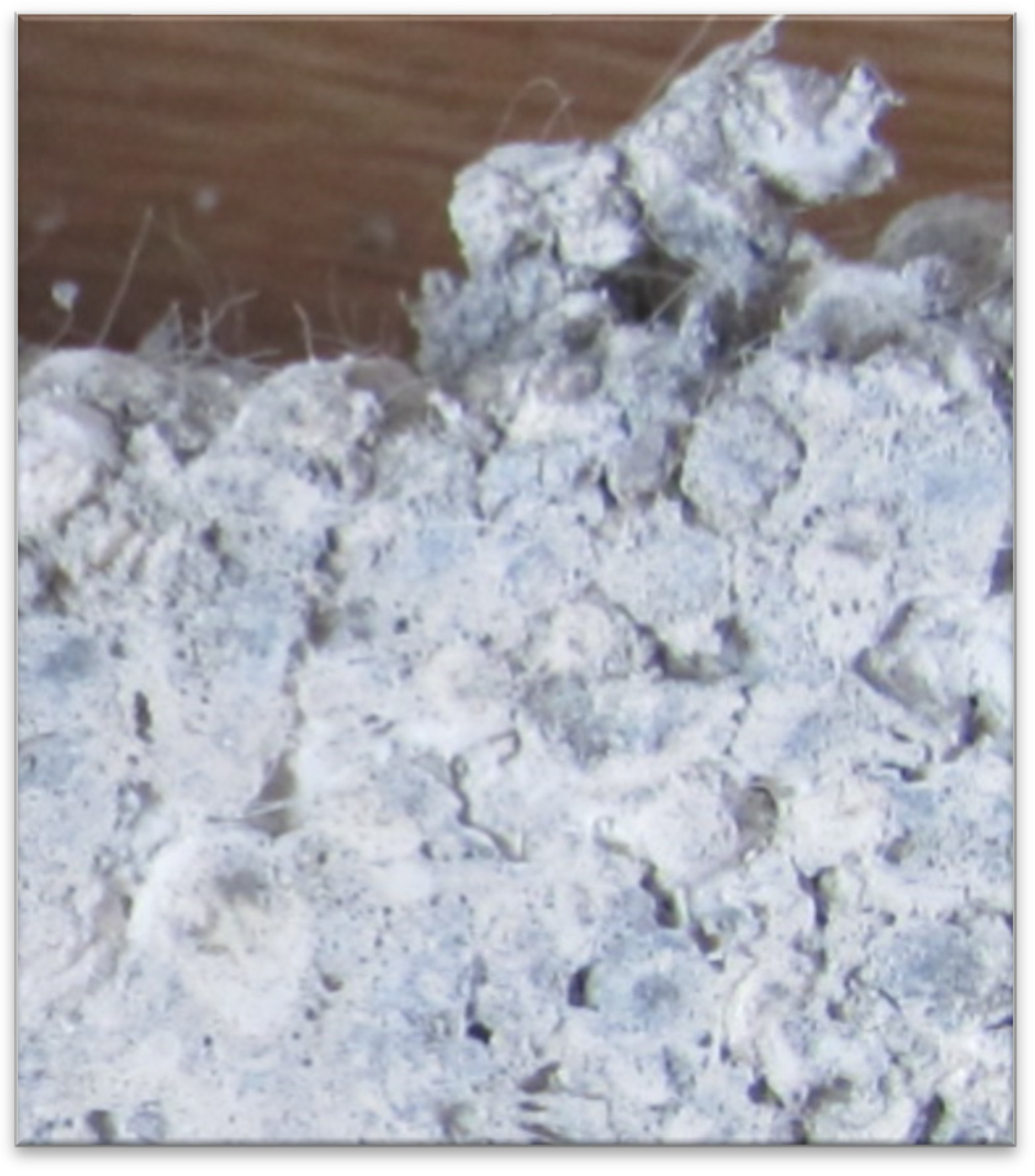
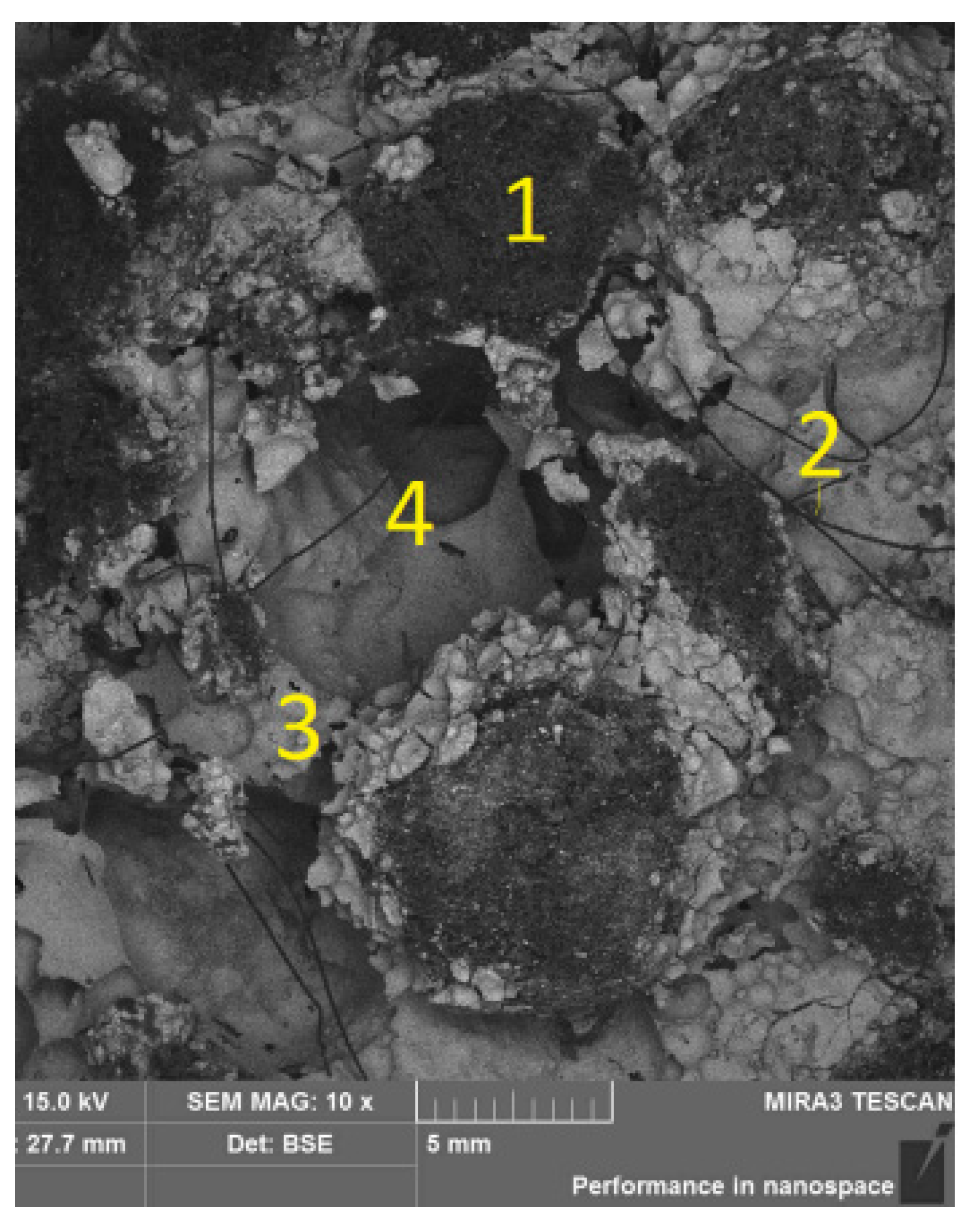



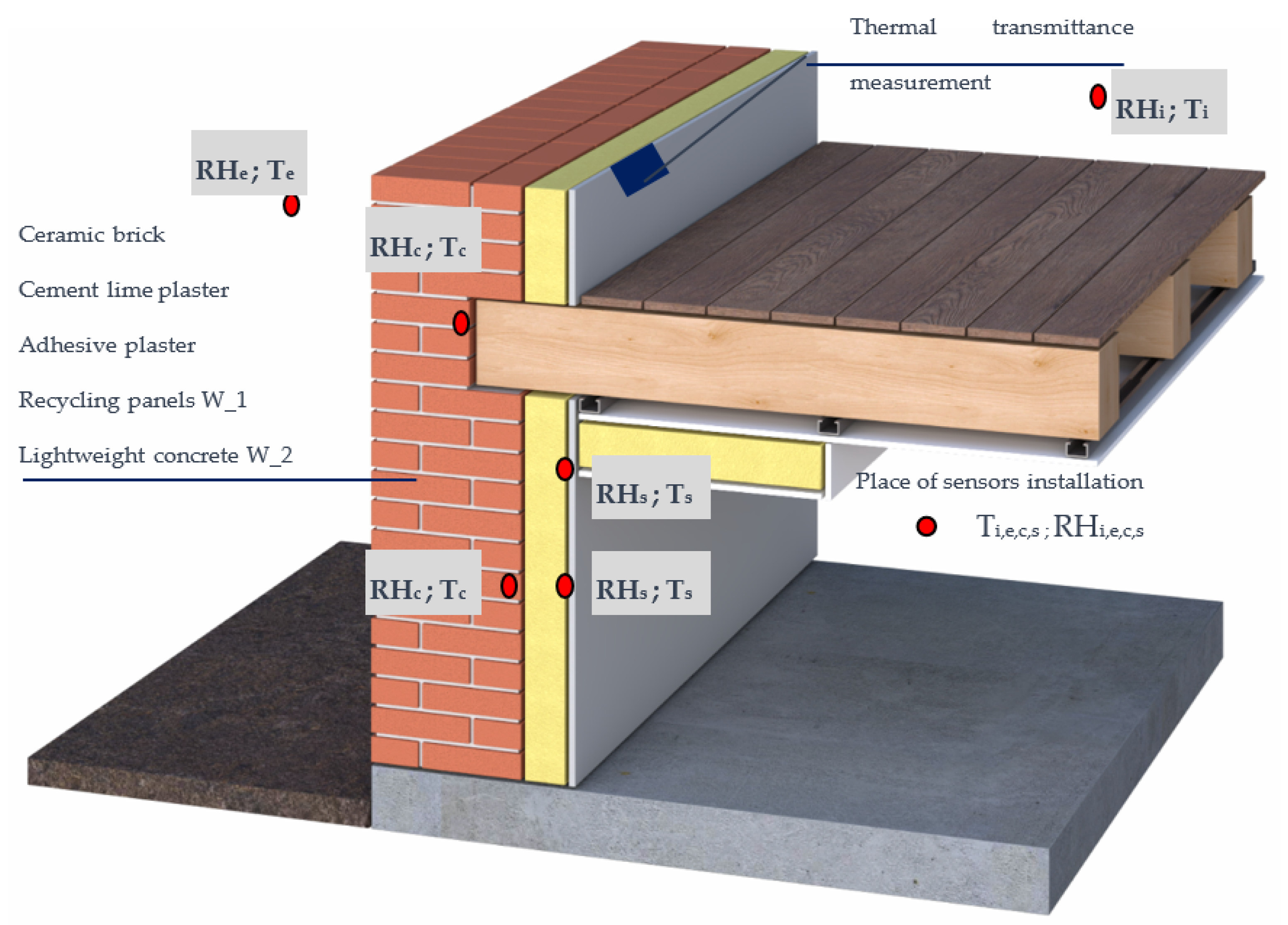
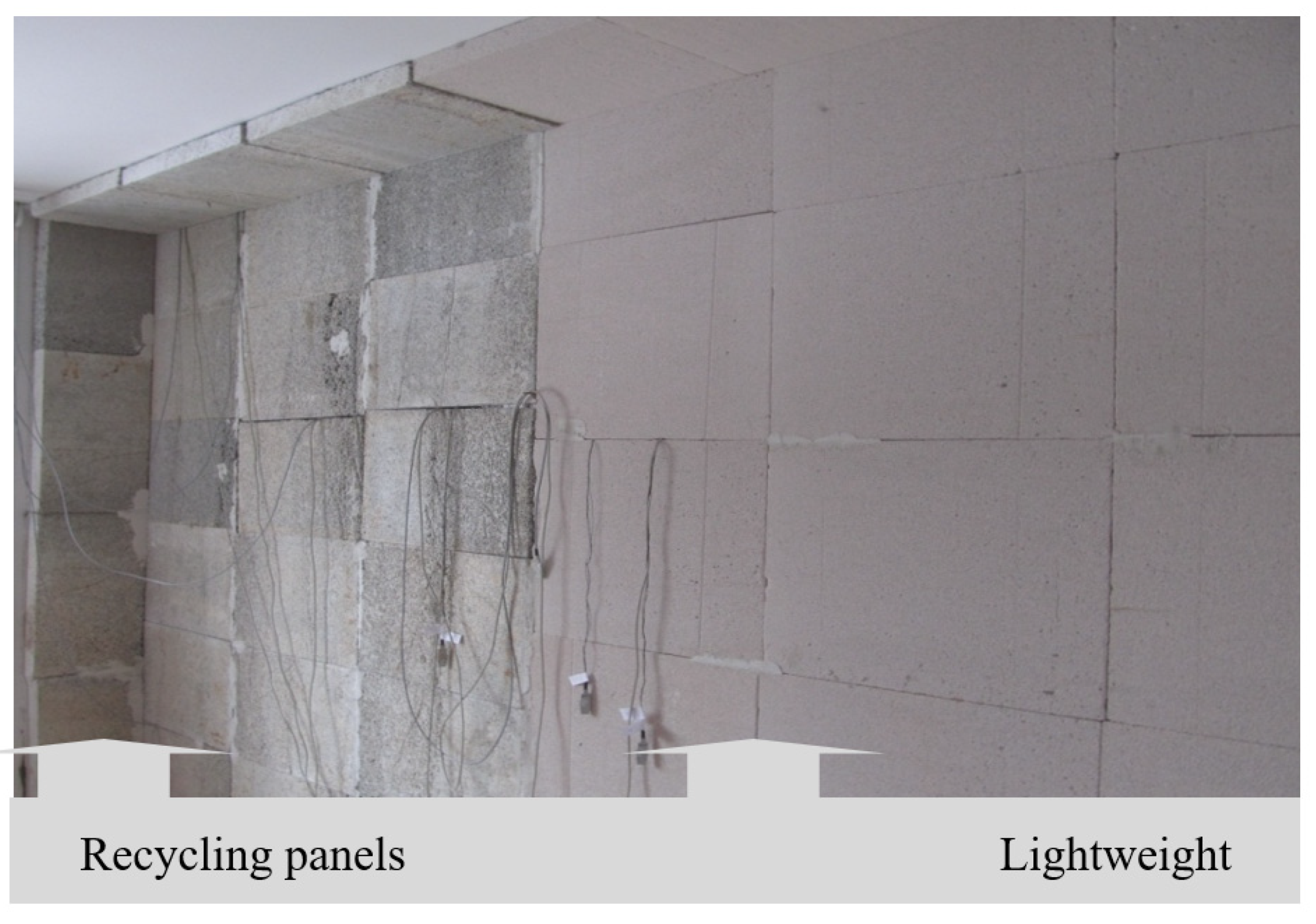
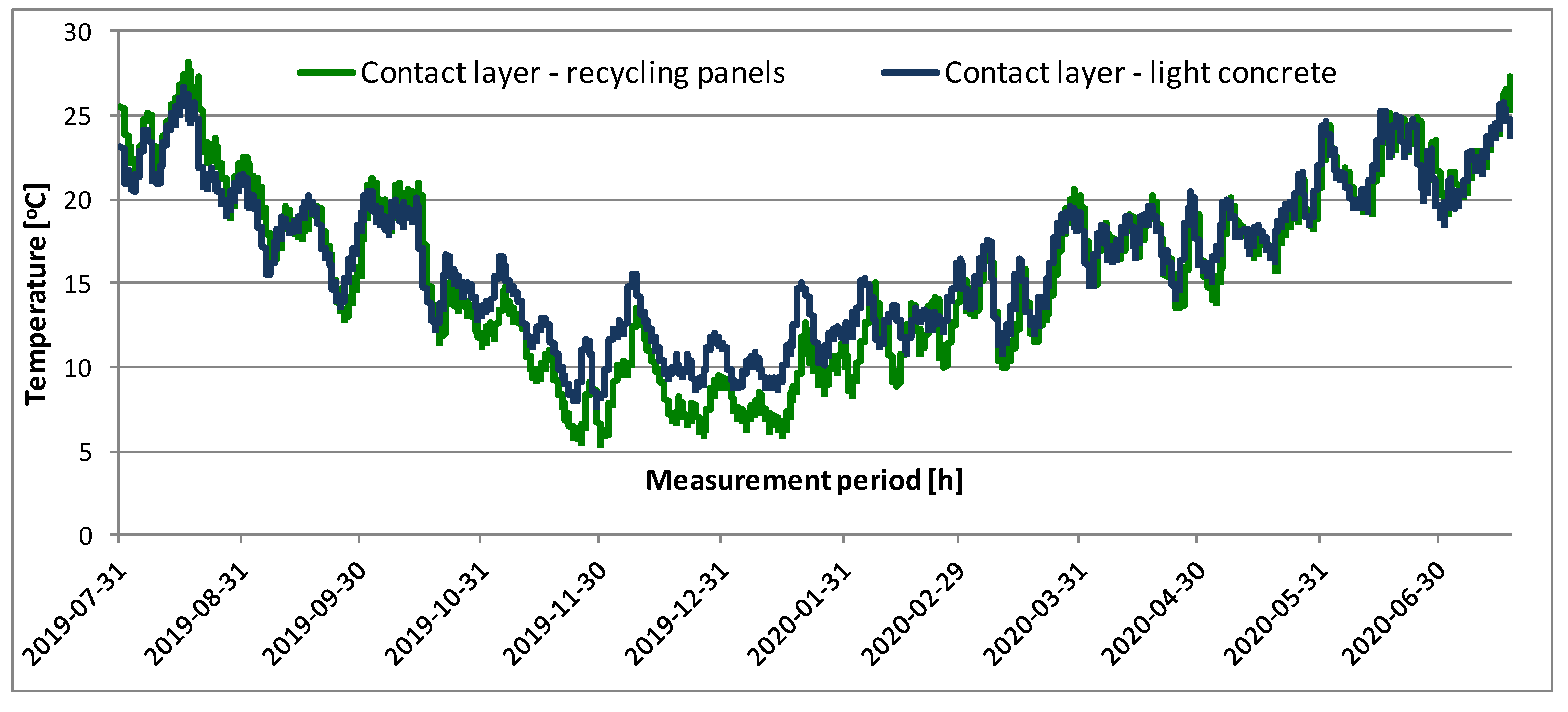
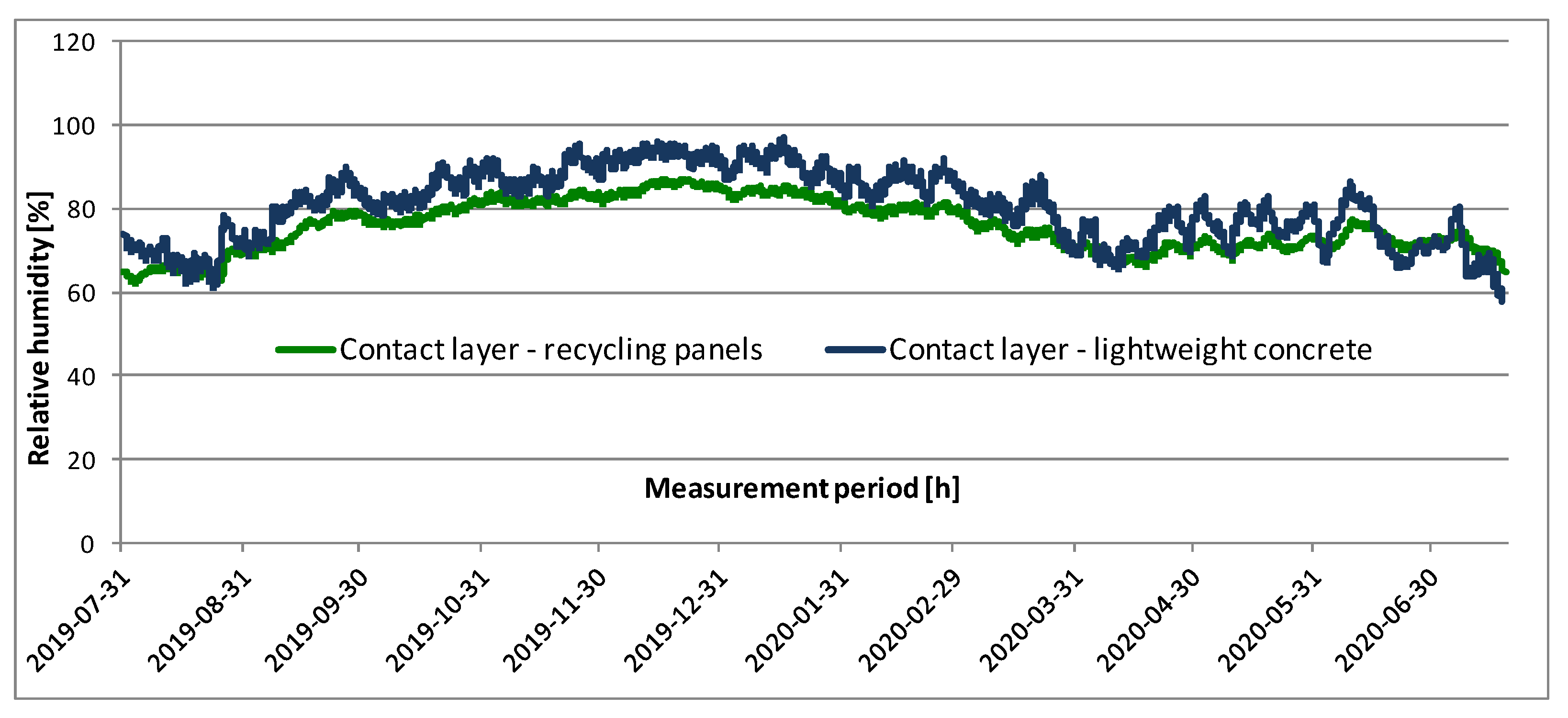
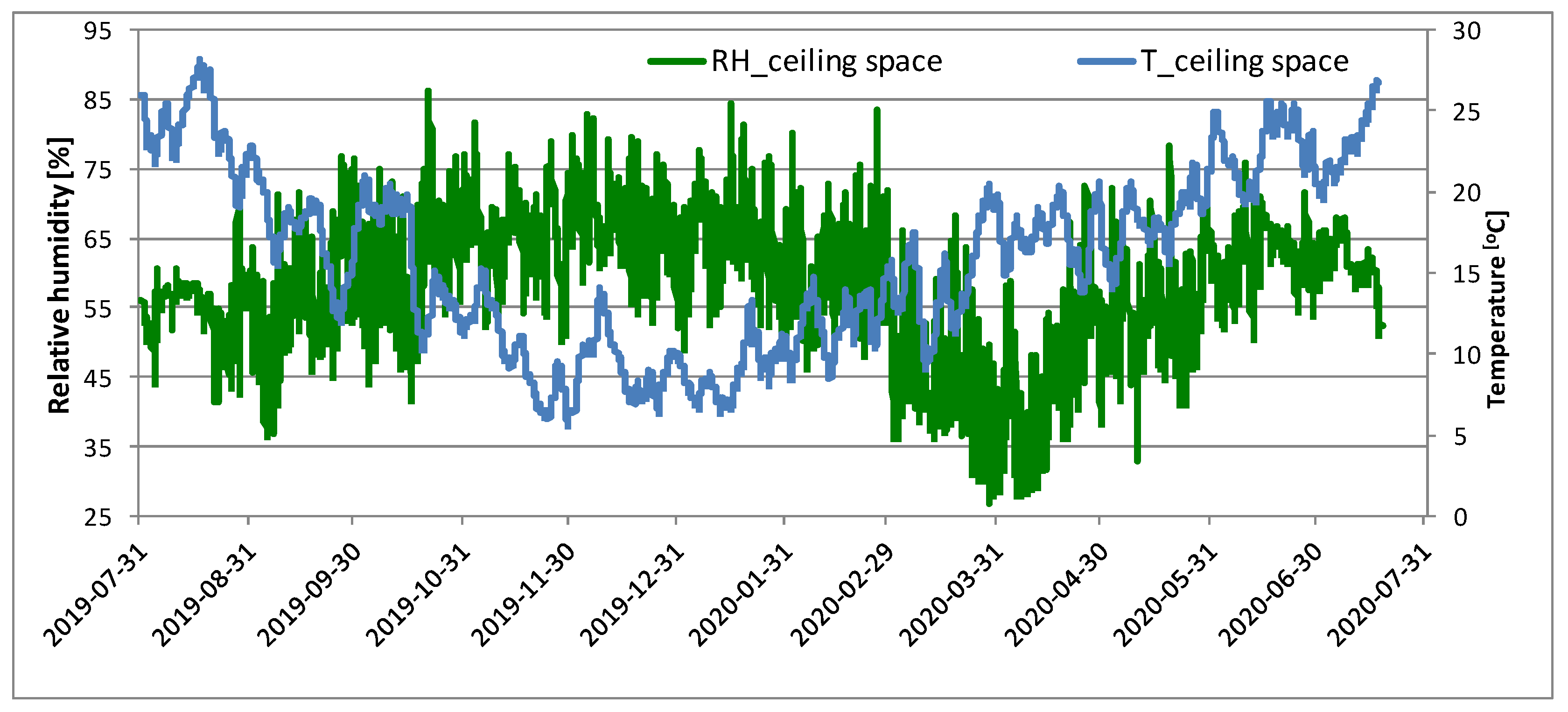

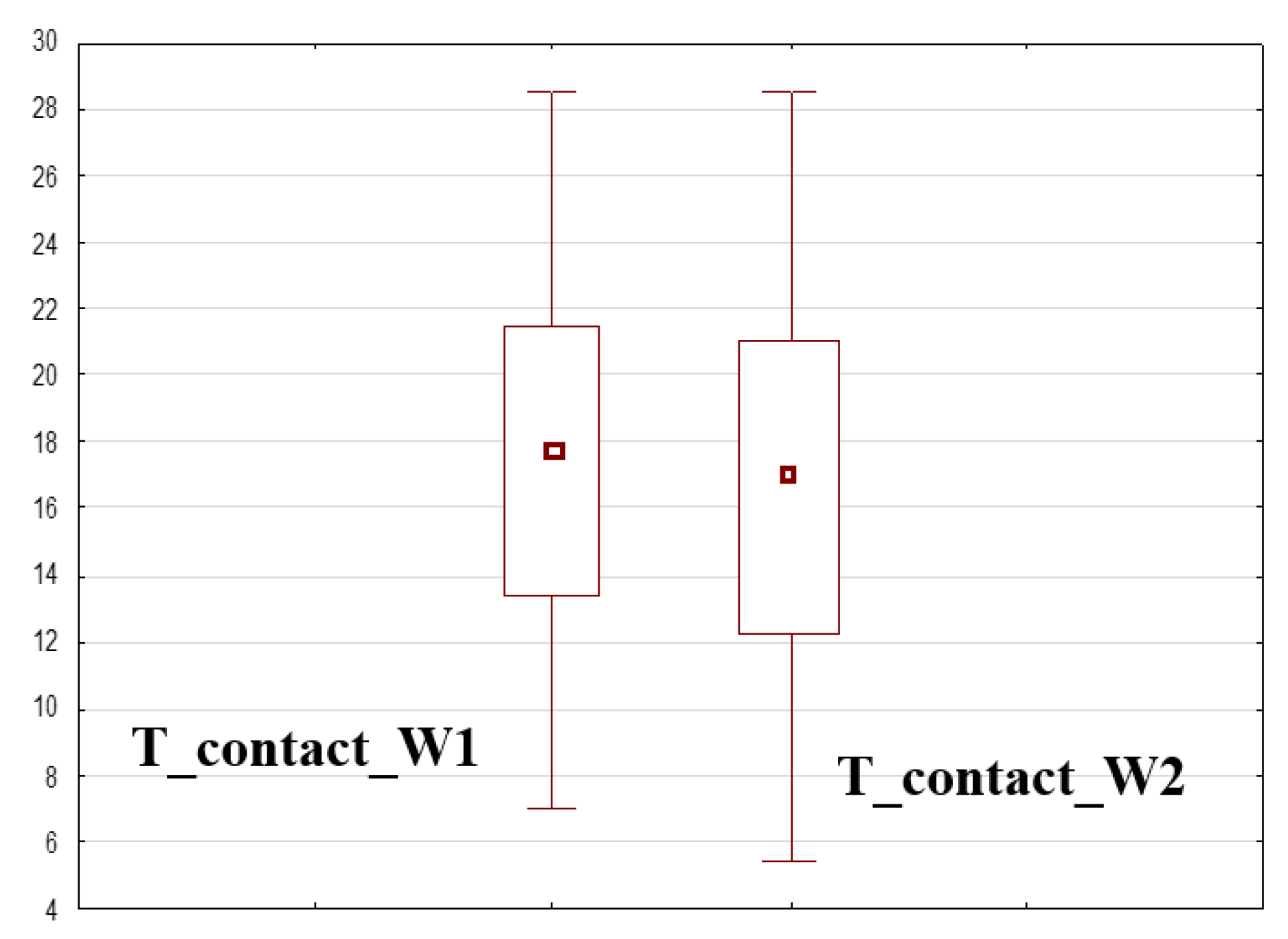


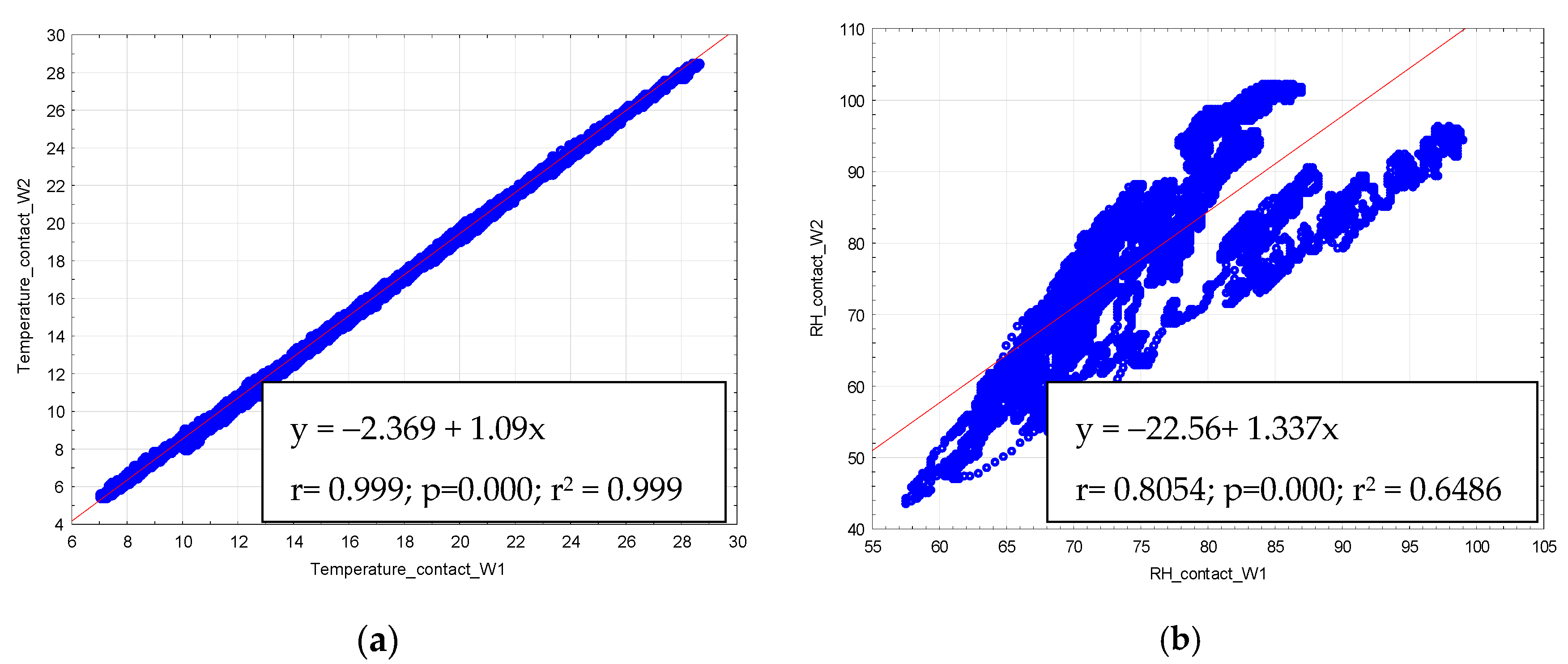
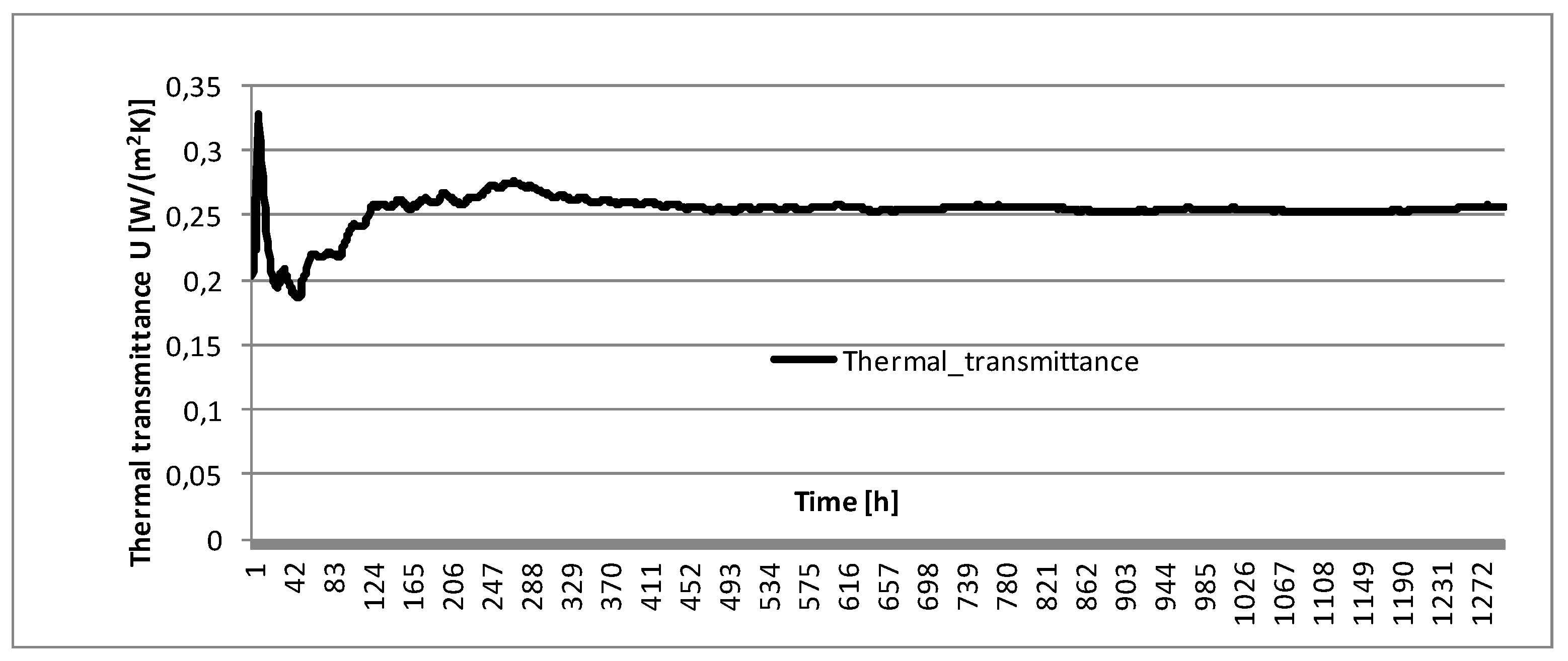
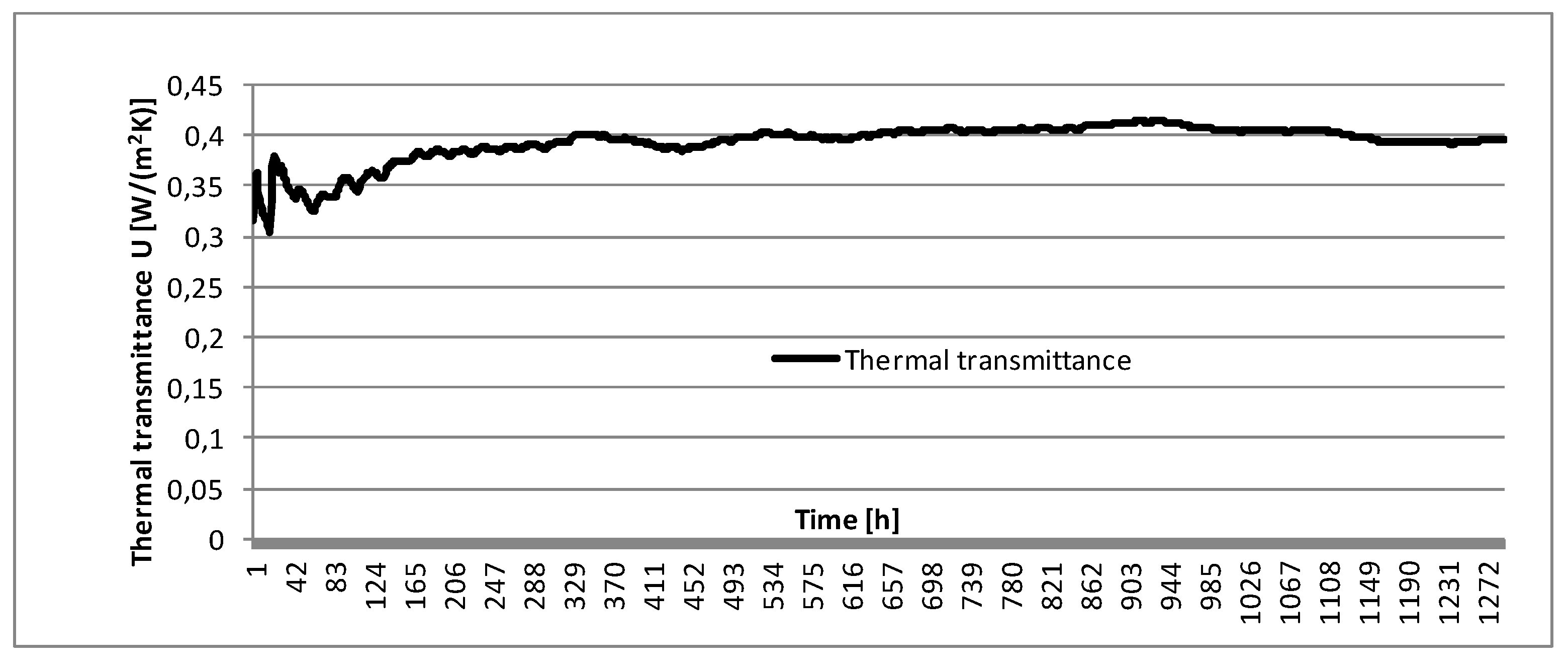

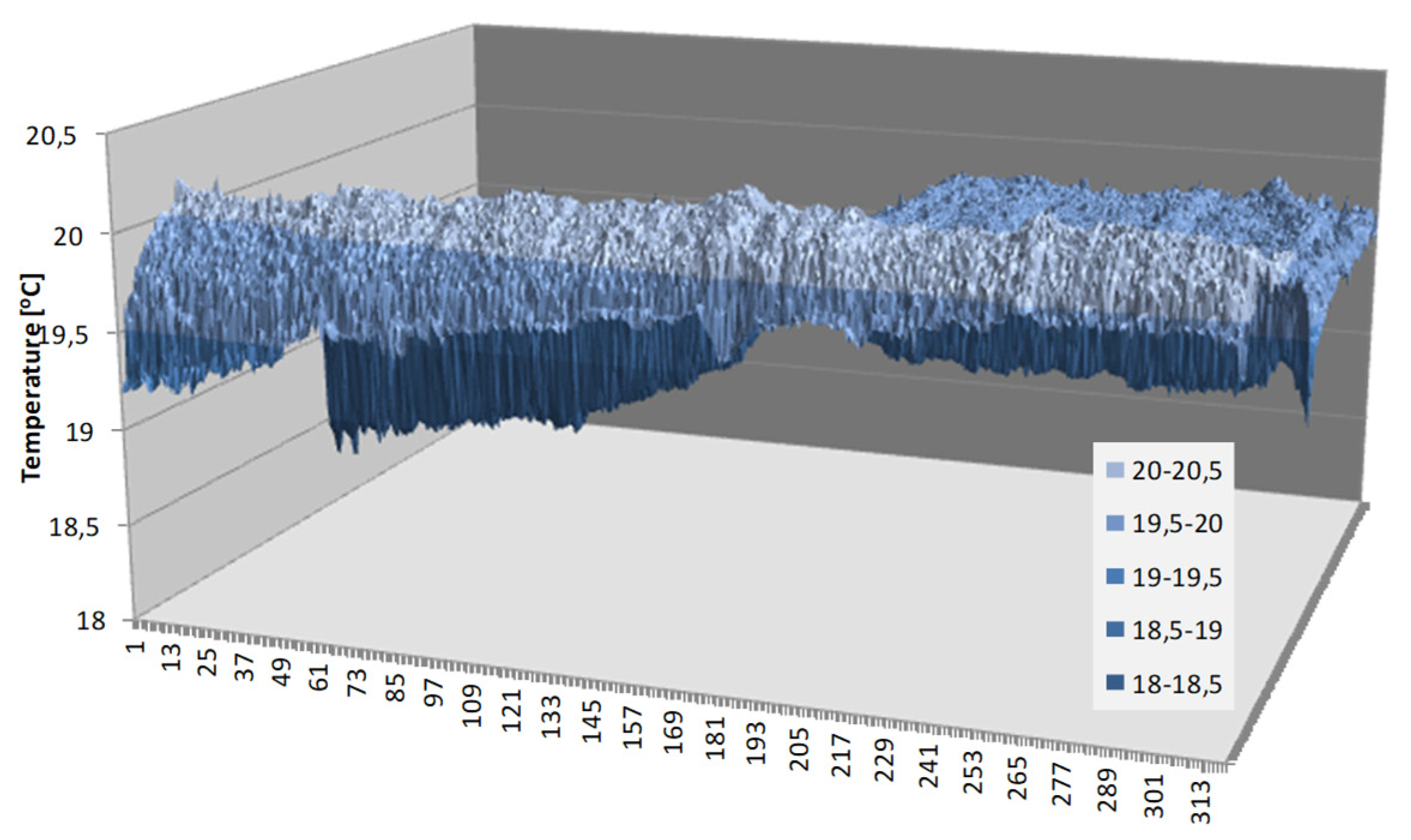
| Density ρ [kg/m3] | Thermal Conductivity λ [W/mK] | Diffusion Resistance Coefficient µ [–] | Specific Heat c [J/kg K] | Porosity ε [%] | Water Absorption W [kg/m2h0.5] | ||
|---|---|---|---|---|---|---|---|
| PU polyurethane foam | 31–33 | 0.023–0.029 | 40–200 | 1400–1500 | 97 | 0 | |
| Extruded polystyrene | 25–50 | 0.028–0.042 | 50–250 | 1300–1700 | 95 | 0 | |
| Expanded polystyrene | 15–25 | 0.031–0.040 | 20–100 | 1210–1500 | 98–99 | 0 | |
| Mineral wool | glass | 15–100 | 0.032–0.041 | 1–2 | 840–1000 | 94–99 | 0 |
| rock | 30–150 | 600–840 | |||||
| Light cellular concrete | 115–130 | 0.04–0.045 | 3–6 | 1300 | 95 | 0.5–1.0 | |
| Calcium silicate panels | 180–400 | 0.03–0,09 | 2–7 | 850–1200 | 85–93 | 40–80 | |
| Cork (panel) | 100–150 | 0.04–0.06 | 2–8 | 1700–1900 | 90 | − | |
| Perlite (panel) | 100–150 | 0.042–0.055 | 5–8 | 850–100 | 95 | − | |
| VIP | 150–220 | 0.007–0.008 | ∞ | − | − | 0 | |
| Aerogel (mats) | 130–200 | 0.014–0.017 | 11 | 1000–1500 | 95–98 | 0.024–0.030 | |
| Foam glass | 100–200 | 0.037–0.060 | ∞ | 800–900 | 95–98 | 0 | |
| PF phenolic foam | 35–45 | 0.021–0.024 | 30–60 | 1500 | − | − | |
| Wood fibers (panels) | 50–190 | 0.038–0.055 | 2–10 | 1600–2100 | 98 | 0.4–0.7 | |
| Cellulose (mats) | 60–90 | 0.037–0.045 | 1–2 | 1700–2200 | 95 | 12 | |
| Hemp and linen (mats) | 20–40 | 0.040–0.080 | 1–2 | 1300–2200 | 95 | 4 | |
| Cane | 140–200 | 0.055–0.90 | 2–5 | 1200 | − | − | |
| Sheep wool | 15–30 | 0.038–0.045 | 1–2 | 1700 | − | − | |
| Colloidal silica (for VIP) | 120–250 | 0.018–0.021 | 6 | 800–1050 | 95 | − | |
| Volumetric Density ρ [kg/m3] | Thermal Conductivity Coefficient λ [W/m·K] | Diffusion Resistance Factor µ [–] | Water Absorption [kg/m2] | Sorption [mass %] |
|---|---|---|---|---|
| ≤115 | 0.043 | 3 | 2.0 | ≤6 |
| Thermal Conductivity λ [W/mK] | Coefficient of Diffusion Resistance μ [–] | Diffusion Coefficient of Water Vapor D[m2/s] | Long-Term Water Absorption by Immersion [g/cm2h] | ||
|---|---|---|---|---|---|
| 0.055 | 7 | 3.046 × 10−8 | 0.052 | ||
| Density kg/m3 | Reaction to fire | Initial rate of water absorption cwi,s [kg/(mm2 × min] | Water absorption [%] | ||
| 200 | A2-s1, d0 | 1.07 | 54.9 | ||
| Sorption moisture-Moisture content mass by mass [%] | |||||
| 20 RH | 40 RH | 60 RH | 80 RH | ||
| 4.4 | 5.7 | 6.3 | 6.8 | ||
| Strength tests | |||||
| Compressive strength [kPa] | Bending tensile strength [kPa] | For compressed cubes 10 × 10 × 10 cm, the force was also determined with a 10 mm shortening [kN] | |||
| 350 | 200 | 1.3 | |||
| VARIABLE | T-Test for Dependent Samples | |||||||||
|---|---|---|---|---|---|---|---|---|---|---|
| Average | St. Deviation | Valid | Difference | St. Deviation | t | df | p | Confidence −95% | Confidence +95% | |
| T_contact_W1 | 17.52269 | 5.133552 | ||||||||
| T_contact_W2 | 16.74548 | 5.602227 | 12938 | 0.777206 | 0.492825 | 179.3811 | 12937 | 0.00 | 0.768713 | 0.785699 |
| VARIABLE | T-Test for Dependent Samples | |||||||||
|---|---|---|---|---|---|---|---|---|---|---|
| Average | St. Deviation | Valid | Difference | St. Deviation | t | df | p | Confidence −95% | Confidence +95% | |
| RH_contact_W1 | 76.74597 | 8.31292 | ||||||||
| RH_contact_W2 | 80.06053 | 13.80219 | 12109 | −3.31456 | 8.648579 | −42.1731 | 12108 | 0.00 | −3.46862 | −3.16050 |
Publisher’s Note: MDPI stays neutral with regard to jurisdictional claims in published maps and institutional affiliations. |
© 2021 by the author. Licensee MDPI, Basel, Switzerland. This article is an open access article distributed under the terms and conditions of the Creative Commons Attribution (CC BY) license (http://creativecommons.org/licenses/by/4.0/).
Share and Cite
Orlik-Kożdoń, B. Polystyrene Waste in Panels for Thermal Retrofitting of Historical Buildings: Experimental Study. Energies 2021, 14, 1844. https://doi.org/10.3390/en14071844
Orlik-Kożdoń B. Polystyrene Waste in Panels for Thermal Retrofitting of Historical Buildings: Experimental Study. Energies. 2021; 14(7):1844. https://doi.org/10.3390/en14071844
Chicago/Turabian StyleOrlik-Kożdoń, Bożena. 2021. "Polystyrene Waste in Panels for Thermal Retrofitting of Historical Buildings: Experimental Study" Energies 14, no. 7: 1844. https://doi.org/10.3390/en14071844
APA StyleOrlik-Kożdoń, B. (2021). Polystyrene Waste in Panels for Thermal Retrofitting of Historical Buildings: Experimental Study. Energies, 14(7), 1844. https://doi.org/10.3390/en14071844






